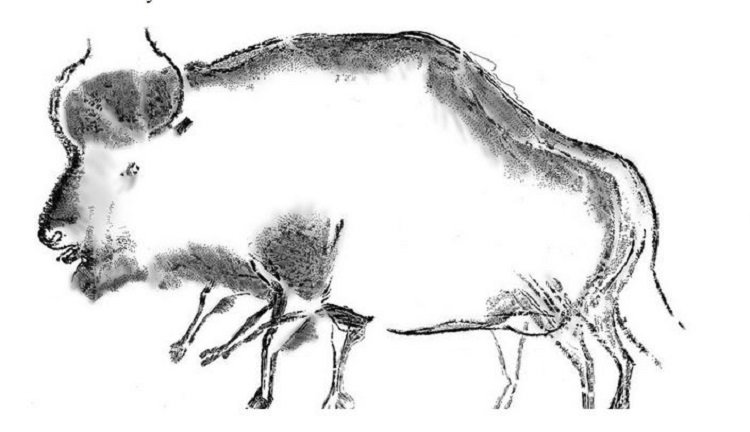
Researchers have identified a previously unknown hybrid species of bison and cattle, with the help of cave drawings dating to at least 12,000 years ago.
Nicknamed the Higgs Bison (a play on the physics term Higgs boson) because of its once mysterious, elusive past, DNA analysis has verified the existence of the hybrid.
A new study published in the journal Nature Communications describes how the animal originated more than 120,000 years ago through the hybridization of the extinct Aurochs, the ancestor of modern cattle, and the Ice Age Steppe bison, which ranged across the cold grasslands from Europe to Mexico.
Higgs Bison eventually became the ancestor of the modern European bison, also called the wisent.
Study co-author Alan Cooper, director of the University of Adelaide's Australian Center for Ancient DNA, said that the Auruchs and the Ice Age Steppe bison were "doing things they are not meant to be doing together and producing a completely new species that survived, which is bizarre because normally that's not meant to happen in mammals."

"What is most surprising in the case of the wisent," he added, "is that the hybrid form not only survived for more than 100,000 years, but potentially out-competed its parent species in some particular environments by better adapting to some of the extreme climate variations at the time."
The study began almost 15 years ago, when Cooper and his students became interested in studying ancient bison populations in Europe to better understand the impact of climate change on those animals and other megafauna. They extracted DNA from radiocarbon-dated bones and teeth unearthed across Europe as well as in the Urals and Caucasus regions at the border of Europe and Asia. The resulting genetic signature from many of the bison bones was very different from that of the modern European bison or any other known species.
The researchers accumulated more genetic evidence over the years, revealing the hybridization. The dated bones also showed that the Higgs Bison and the Ice Age Steppe bison swapped dominance in Europe several times, coinciding with major environmental changes.
But the scientists still could not put a proverbial face to the Higgs Bison. In order to make visual sense of the genetic results, they investigated cave art. Bison, after all, seemed to be a favorite subject of early artists. Marie Badisa, the French Culture Ministry's curator for Chauvet cave (containing 32,000 - to 36,000-year-old cave art) even went so far as to describe such art as "prehistoric cinema," given that it is so dynamic and realistic.
Sure enough, the bison depicted prior to around 18,000 years ago sported long horns and large forequarters, similar to that of American bison, which are descended from the Ice Age Steppe bison. The bison depicted after 18,000 years ago have shorter horns and small humps, closer to those of modern European bison.


You can even drink a toast to these animals and the early cave artists, as locals make a vodka that contains grass that the European bison like to munch. The 80-proof beverage is called Żubrówka (meaning Bison Grass Vodka) and has been described as tasting like vanilla, coconut, almond, and — as you probably guessed — grass



Reader Comments
to our Newsletter